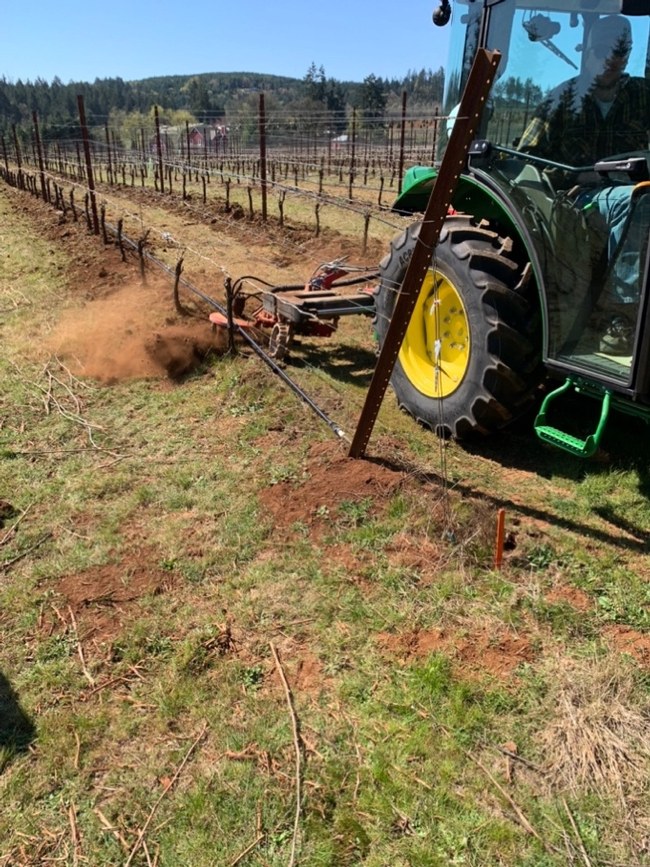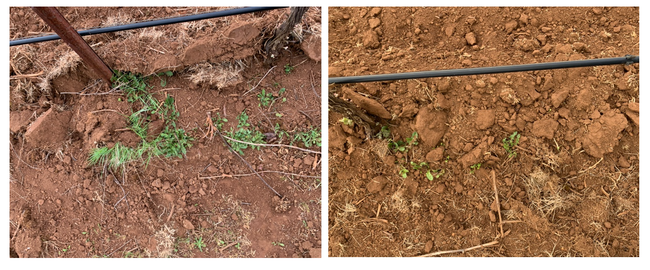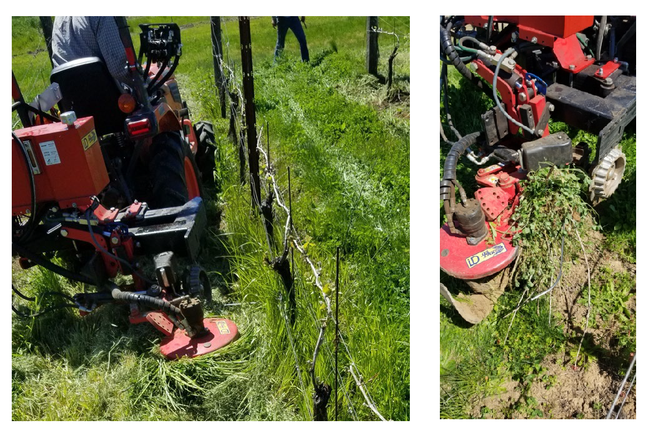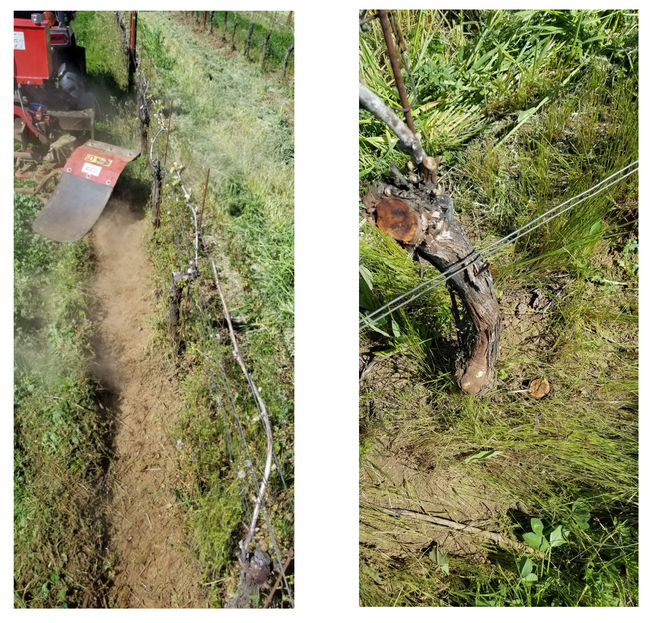From the Weeders of the West blog • 07/14/2021
Mechanical Weed Control under the Vine

Mechanical cultivation is one option to replace or to complement chemical weed control under the vines. A variety of vineyard under-vine cultivators are available on the market. Weed control efficacy depends on plant species and operation timing, but no single piece of equipment will control all weed species or be compatible with all vineyard layouts. There is limited research in mechanical in under vine weed control options.
A project funded by Western Sustainable Agriculture Research and Education (WSARE, project number OW18-019) was initiated in 2018 to improve our understanding of the applications and limitations of under-trellis cultivators in Oregon vineyards. A total of six treatments were included: brush weeder, rotary tiller, hoeing blade, in-row mower, hoeing blade with rotary tiller, and a nontreated reference. Each side of the vine row was cultivated once with an ID David in row weeder with a single-side hydraulic articulating arm mounted on the rear of the tractor (Figure 1).
Among all implements, the best performance was observed when soil volumetric water content was below 30% in a silt clay soil. Rainfall, which occurred after cultivation, appeared to impact efficacy, as it supported weed regrowth or new seedlings. Cultivation early in the season was less effective in part because of significant rainfall in the weeks following the treatment. The highest level of control was observed with the hoeing blade with the rotary tiller. Control was as high as 80% four weeks after treatment. The tiller plus hoeing blade outperformed the hoeing blade alone in some instances, likely because this combination better disrupted weed root-soil contact (Figure 2).
The rotary tiller alone did not control weeds as consistently as the hoe blade or the hoe blade with the tiller. The tiller operates in the top few inches of the soil, and not every plant was uprooted or cut during the operation. Also, it did not perform well in conditions with abundant plant biomass (Figure 3). That was also an issue with other implements when plant biomass, in this case a cover crop, blocked the sensor bar that controls the movement of the implement in and out of the planting row.
The mower could not be used early in the season because weeds were too short and could be mowed, but weeds might be tall enough to mow in late spring. Mowing can reduce weed biomass and potentially seed production. The brush weeder operates by cutting weeds at the soil level or by uprooting seedlings (Figure 4). This abrasive action produces minimal soil disturbance but can generate dust when the soil is dry. The benefit of the brush weeder is the control of weeds and removal of grape suckers in one pass. We did, however, observe the brush weeder removing the bark of some vines. Further, it would become entangled with trellis wires placed closer to the ground. Weed control varied among sites, but in general, the brush weeder suppressed weed regrowth, unlike the mower.
Acknowledgments
We also compiled information on the speed of operation to help estimate operational capacity and costs. This data should be available online soon.
- Western Sustainable Agriculture funded this work (award no. OW18-019). I would also like to acknowledge the Erath Foundation for supporting this project and the local growers who participated.
References
- Duke SO, Powles SB. Glyphosate: a once-in-a-century herbicide. Pest Manag Sci. 2008;64(4):319-25. doi: 10.1002/ps.1518. PubMed PMID: 18273882.
- Myers JP, Antoniou MN, Blumberg B, Carroll L, Colborn T, Everett LG, et al. Concerns over use of glyphosate-based herbicides and risks associated with exposures: a consensus statement. Environmental Health. 2016;15(1):19.
Marcelo Moretti (UC Davis graduate, Hanson Lab) is an Assistant Professor with the Dept. of Horticulture, Oregon State University and David King is a Faculty Research Assistant with the Moretti Lab.
Original source: Weeders of the West blog • 07/14/2021


